Budapest’s Royal and Regal Palaces and Castles
Hundreds of years of history, empire, wealth and culture shape the now unified sister cities of Buda and Pest. In my previous post, A traveler’s journal: meandering Budapest’s Streets, I took you through some of the city’s more off-beat, religious and cultural attractions. In this post let’s dive into some of the city’s better known and more visible attractions.
Buda Castle & Palace
While not what you might typically consider when thinking of a traditional castle, Buda Castle and the Castle Hill/Castle District is actually a small city in its own right located on top of one of the plateaus overlooking the Danube. The Castle and Royal Palace cover the southern end of the hill and are composed of a sprawling mixture of fortified walls, large palatial buildings, beautiful fountains, and royal monuments. While the current incarnation is much more modern, regional royalty have been using the hill since the mid-1200s with the first royal residence built somewhere around 1260 AD.
It wasn’t until 150 years later that the oldest sections of the current castle (now little more than the foundations of an old Castle Keep) were constructed. In the early 1400s King Sigismund, the Holy Roman Emperor at the time, made significant additions to the Palace as befitted the city’s role as the heart of the Holy Roman Empire. In addition to enhancing the palatial sections Sigismund also made major enhancements to the castle’s defensive walls and apparatus. Later kings, including Mathias Corvinus and Vladislaus II continued to expand the palace over the next hundred or so years. The Ottoman army conquered the Kingdom of Hungary in 1526. Over the following century the Ottomans occupied Buda and fended off a number of Habsburg sieges until the Siege of 1686 which did extensive damage. This led to the Habsburgs taking control of the city. Unfortunately, the siege destroyed the majority of the medieval palace, the remainder of which was temporarily neglected, while repairs were made to the fortifications.
More recently a series of baroque palaces were constructed starting in the early 1700s. Many of these were damaged by wars and large fires – though each of these left its mark on the castle and palatial layout of the area. Eventually the palace was re-built in the mid-1800s before being heavily renovated around the turn of the century. Small tweaks were made until WWII when the castle was ravaged by the war and faced extensive damage. Fascinatingly the re-building which took place in the 50s and 60s gave us the hybrid structure that we now see. A mixture of the castle and places as they existed across history.
Without learning the history behind the castle and palace you would never suspect that it had such a turbulent and destructive past. The modern buildings look pristine, well-preserved, historical and beautiful. As I strolled along its cobblestone streets, through large heavily-worked gates, and from open courtyard to courtyard, I felt as though I was walking through a fairy-tale palace. All it took was a little imagination, closing my eyes, and a thought to strip away the cars and tourists… to trade them for romanticized visions of formal events attended by beautiful people in regal evening attire arriving in carriages, accompanied by the delightful rhythm of a Viennese waltz drifting to my ears from one of the building’s many ballrooms.
During my visit the kiss of fall was visible everywhere. Even the light had a soft amber hue to it, which only served to set off and accentuate the golden leaves and deep red hues of the numerous hedges, trees, and vines that stand, lean, and crawl across the castle walls.
I’ve always had a soft spot in my heart for cats, so perhaps it is no surprise that one of my favorite decorations around the palatial grounds were the guardian lions. Beautifully carved in a style I love, these regal stone creatures stand guard throughout Budapest. However, of all of the lion statues in the city – those on the Chain Bridge, etc. – the lions around Buda Castle are my favorite.
Unfortunately, due to time limitations we didn’t make it into the interior of the Castle, which apparently boasts a number of impressive rooms and displays in the Budapest History Museum, situated in one of the Castle’s wings. It’s definitely something I’d love to return to the city to see, as the history of Budapest and to some degree Buda Castle has played such an influential role in the shaping of our modern world.
Fisherman’s Bastion & Mathhias Church
Located on Castle Hill, Fisherman’s Bastion is a fortification built and finished in 1902 that overlooks the Danube immediately beside Matthias Church. The series of seven towers were designed to represent the seven tribes that initially settled the Carpathian Basis around 900 AD.
The bastion boasts a unique architecture that feels distinctly Hungarian, but also borrows from more eastern inspirations and manages to pull off the appearance of a defensive structure while maintaining an almost ornamental feel. This comes largely from the large archways and pointed domes that decorate the bastion. It’s somewhat odd and arguably ill-fitting name makes significantly more sense in context. Historically, the Fisherman’s Guild had the replaced and manned section of the Bastion’s walls though I don’t believe they were involved with their defense by the time the walls were re-built and dedicated.
These days the Bastion’s main draw and purpose is as a partial cafe and scenic overlook. The walls of the Bastion offer a spectacular view out over the Danube and Pest side of the river. It’s also one of the best locations to view Hungary’s ornate Parliament Building, which features a Gothic Revival style.
Visitors to the Bastion will also note a large regal statue of Stephen the 1st of Hungary mounted on a horse which depicts him as a saint. It is placed on top of a large carved marble monument. For visitors interested in one of the best views in Budapest, I’d suggest exploring Castle Hill during the day and then planning on winding down the visit right around sunset along the Fisherman’s Bastion.
The third structure of note in the immediate area is Mathias Church. An impressive Gothic structure that dates back to the latter part of the 14th century. It replaced its Romanesque predecessor built more than 400 years earlier. During the Ottoman period, the church was used as a mosque before being re-claimed as a cathedral after Christian’s re-possession of the city in 1686. More recently, towards the end of the 19th century, the building was renovated with several more modern aspects added, such as the ornate tile work on the roof.
The Cathedral is one of the most easily recognizable and prominent buildings located within the Castle Hill District. It is an easily recognizable landmark visible from just about everywhere in Budapest. It features a mixture of art in the form of the Ecclesiastical Art Museum and serves as home to replicas of the Hungarian royal jewels and a variety of other sacred relics.
One thing that really stood out for me about the Cathedral was its tile work. While many Gothic cathedrals feature copper or slate roofing, the 19th century renovation of the Cathedral replaced its more traditional designs with colorful and ornately patterned roof tiles. These caught and reflected the sun while adding an unusual level of character and personality to the building.
Castle Hill
While the Bastion and Cathedral are both technically part of the Castle Hill District, I want to make sure to take a few moments to talk about the area as a whole. Stretching along the top of the plateau, the district is a mixture of hotels, museums, tourist shops, restaurants, and housing. Despite its fairly touristy nature, the area still retains the feel of a smaller medieval town, likely due to the age of the buildings, cobblestone streets, and cramped quarters. I felt I was walking through a small town and had to remind myself that I was standing in the heart of Hungary’s capital city.
The whole area is rich with history and derives most of its charm from the small details. Historical interiors glanced through windows, blooming flowerpots, street artists, old wrought-iron lamp posts, fountains and wonderful stone carving after carving.
For those up for a little walk, it’s also possible to leave the castle walls and explore the beautiful ring road which wraps along the back side of the hill. Built along a steep incline, we enjoyed the traditional architecture and beautiful tree-lined lane covered in fallen yellow leaves. There were also a number of steep staircases that careened down the side of the hill towards a large park at the base. While not as picture perfect or historically significant, we thoroughly enjoyed the walk along Castle Hill’s back side. One item worth noting, we passed a war hospital museum during the stroll which looked fascinating. Unfortunately, by the time we stumbled onto it they had already closed for the day.
Heroes Square & Vajdahunyad Castle
Located on the Pest side of the city, Heroes Square is a cultural center and gateway to one of the city’s largest sprawling parks. The Heroes Square is a large open space with a semi-circular monument and pillar. On one side of the square you’ll find the Museum of Fine Arts. On the other you’ll encounter the Palace of Art. Both buildings are beautiful and well worth a visit. While the monument sits at the park side of the square, the world’s second oldest metro – the Millennium Underground – dead-ends at the park after traveling underneath Andrassy Avenue, an iconic tree-lined historic boulevard that serves as home to several other museums and embassies.
The park behind Heroes Square serves as home to Vajdahunyad Castle. Despite possessing an incredibly difficult name to remember and pronounce, the castle has a picturesque quality to quickly make you forget any challenges you may have faced trying to find it. It’s located in the heart of the City Park and is surrounded by a large moat.
Despite an historical appearance, the castle is relatively new and was built between 1896 and 1908. The design of the building is based heavily on Transylvania Castle in Romania, which you may recognize from vampire lore. Interestingly, the original building was built for the Millennial Exhibition and was little more than wood. However, due to significant interest and the complex’s popularity, it was eventually rebuilt out of stone in its current incarnation. In addition to strolling the complex and enjoying the beautiful buildings, water, and park’s lush vegetation, make sure that you pause at the statute of Anonymous. While the history of Anonymous as a 12th century historian who documented ancient Hungarian history is fascinating, the statue itself is beautifully done and has a very unique feel.
Despite touching on a few of the major buildings in Budapest, there are many others to see. You’ll note that I only briefly mentioned the Parliament Building in this post and my previous one on Budapest. Unfortunately, due to the weather and renovations I didn’t get many good shots of it. When I was there, they were celebrating Hungary’s Independence Day and large parts were off-limits.
One thing is for certain – Budapest is a fascinating city with an incredibly rich and storied past. When you visit, make sure to give yourself ample time to explore. The city has served as home to a number of vastly different cultures and empires over the years – from the ornate Ottoman empire to the stoic Soviet period. You’ll need at least a week to explore it properly and a comfortable pair of walking shoes.
Have a favorite place in Budapest? Make sure to share it with me. If I missed it this trip I’d love to make sure I see it when I find my way back to the city.

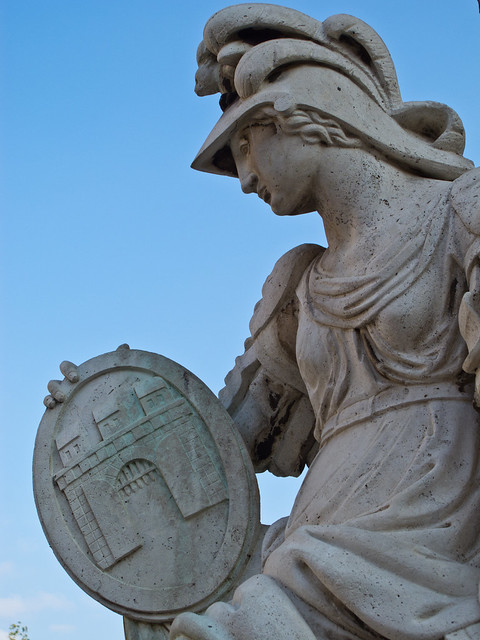
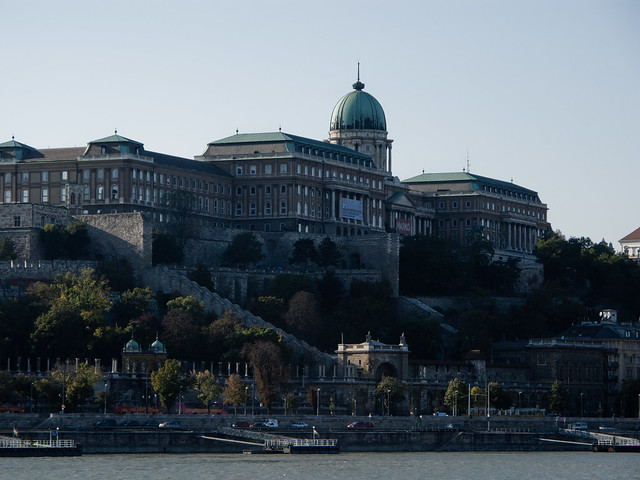
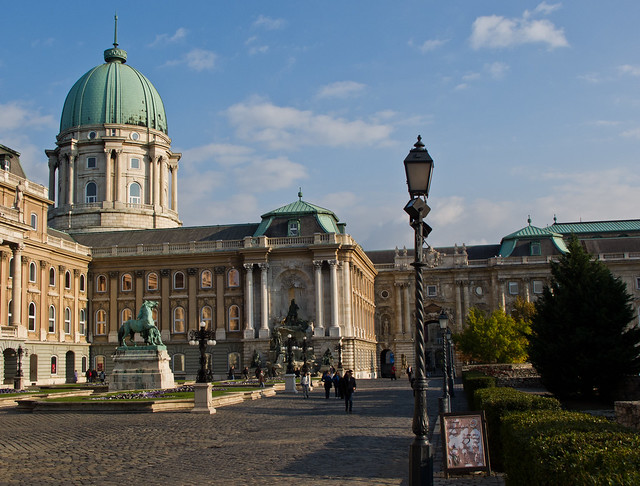



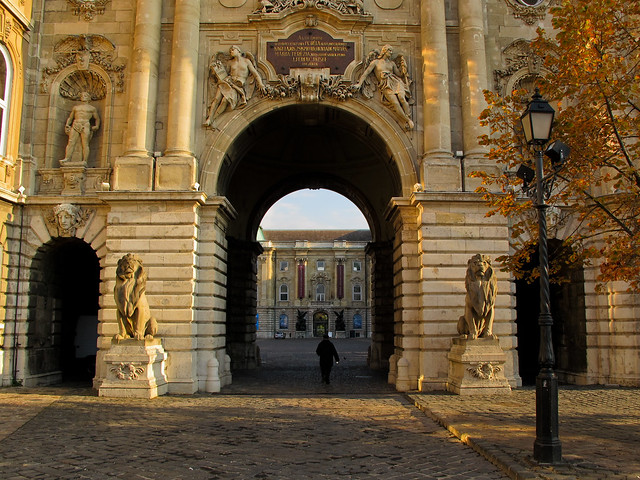
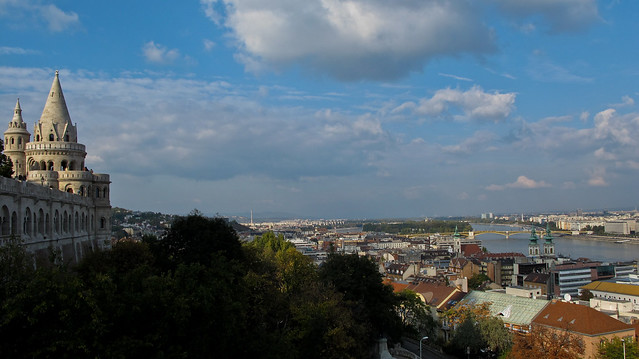
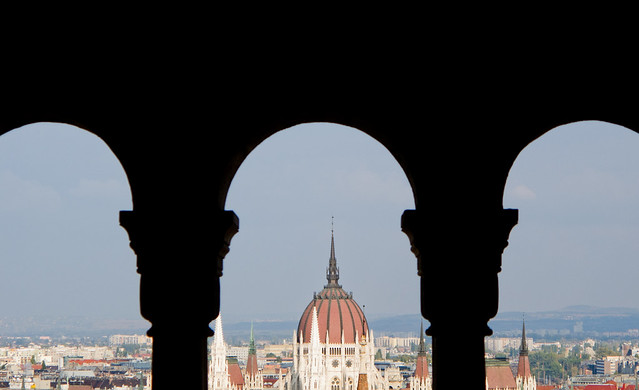
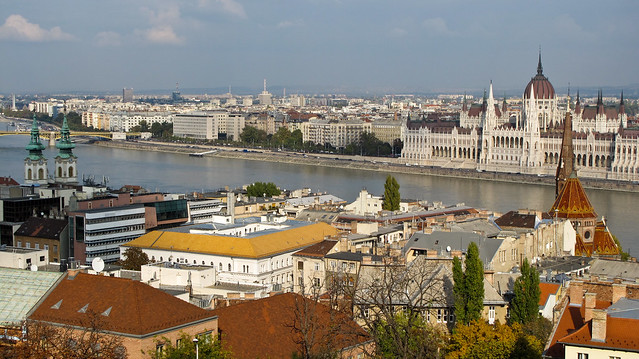
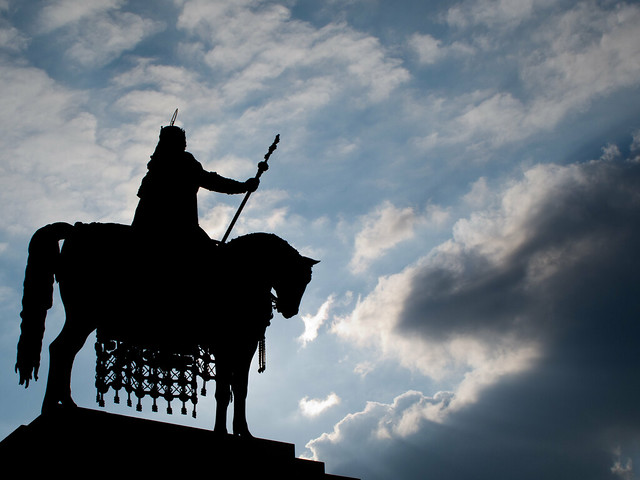

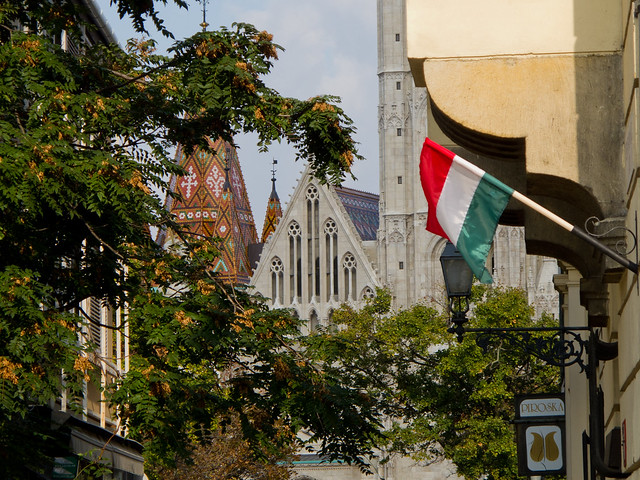
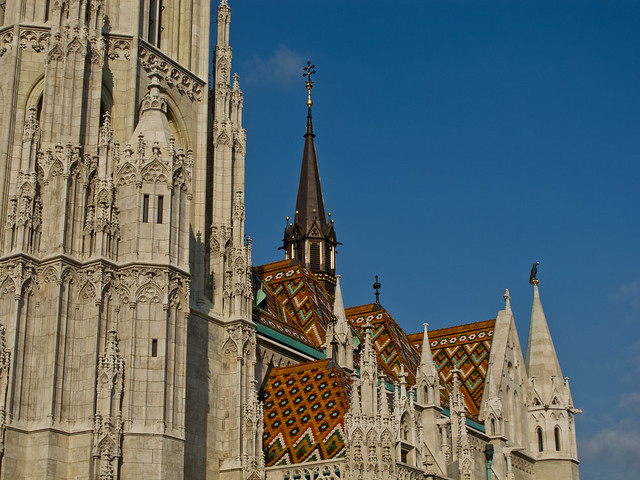
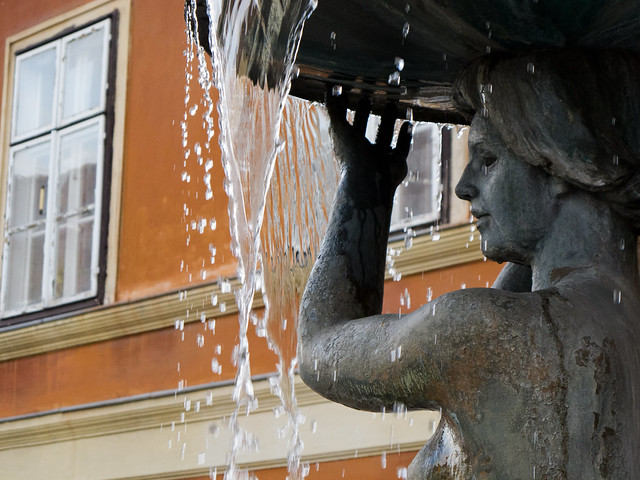




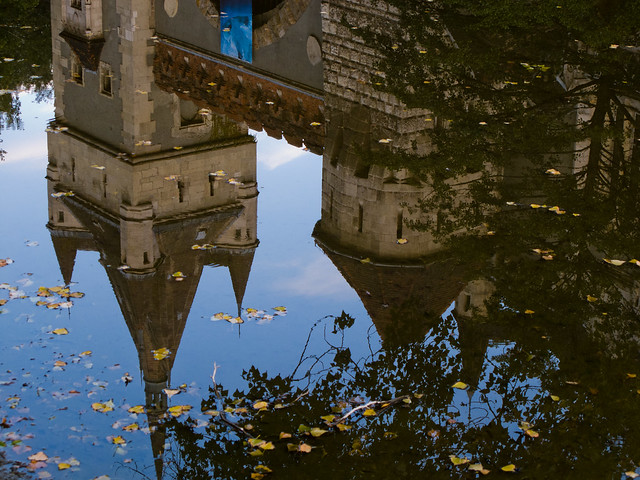
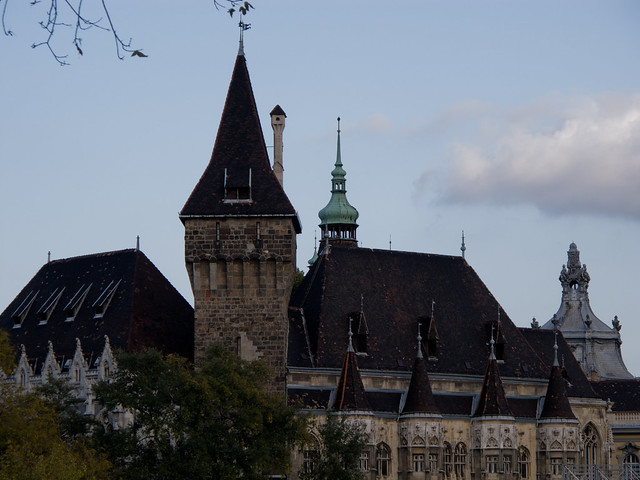
I loved Budapest. Castle Hill is definitely a magical place, especially at night looking out over the city. My daughter especially loved it because she felt like she was wandering around the castle of a beautiful princess. Thanks for reminding me of how much I loved it there!
Wow, I could definitely see how walking it at night would be enchanting! That’s a great suggestion and one I’ll have to follow up on during my next visit! The buildings really do make it easy to slip back in time or into fantastical musings of high society and fancy balls!
Why can’t the US have castles??? Seems you’ve been to Budapest many times — what brings you back?
Agreed, it would be awesome if we had some fantastic ones! Actually, only one trip to Budapest – so going back is high on my list!
I can tell you of a couple places to go in the US to see some beautiful “castles.” The Biltmore Estate in Asheville, NC in particular is AMAZING both at Christmas time and in the summer when it’s gardens are in bloom. Definitely a must see. It’s a gigantic 135,000 sq. ft. french chateau style home. There is also Boldt Castle Alexandria Bay, NY. An impressive home from the looks of it (I’ve not been) and only accessible by water taxi! There is also the Mercer- Fonthill Castle in Doylestown, PA. More museum than anything part of the estate was an actual home. We do have them, you just have to know where to look!
Cool info =)
It’s worth seeing a few old postcard, photos of the Royal Castle – in the 1930’s it looked amazing, a lot more beautiful both outside and inside.
What’s there now is a different, modified, simplified restored version of the one that was ravaged in World War II.
If you compare this with the old one, you’ll cry seeing the beautiful old architecture (including he decorated cupola, roof section, statues, fresco paintings…) that were lost…
Good insights, will definitely have to look up some old postcards!